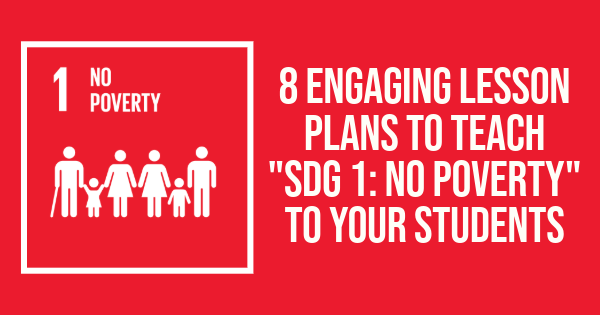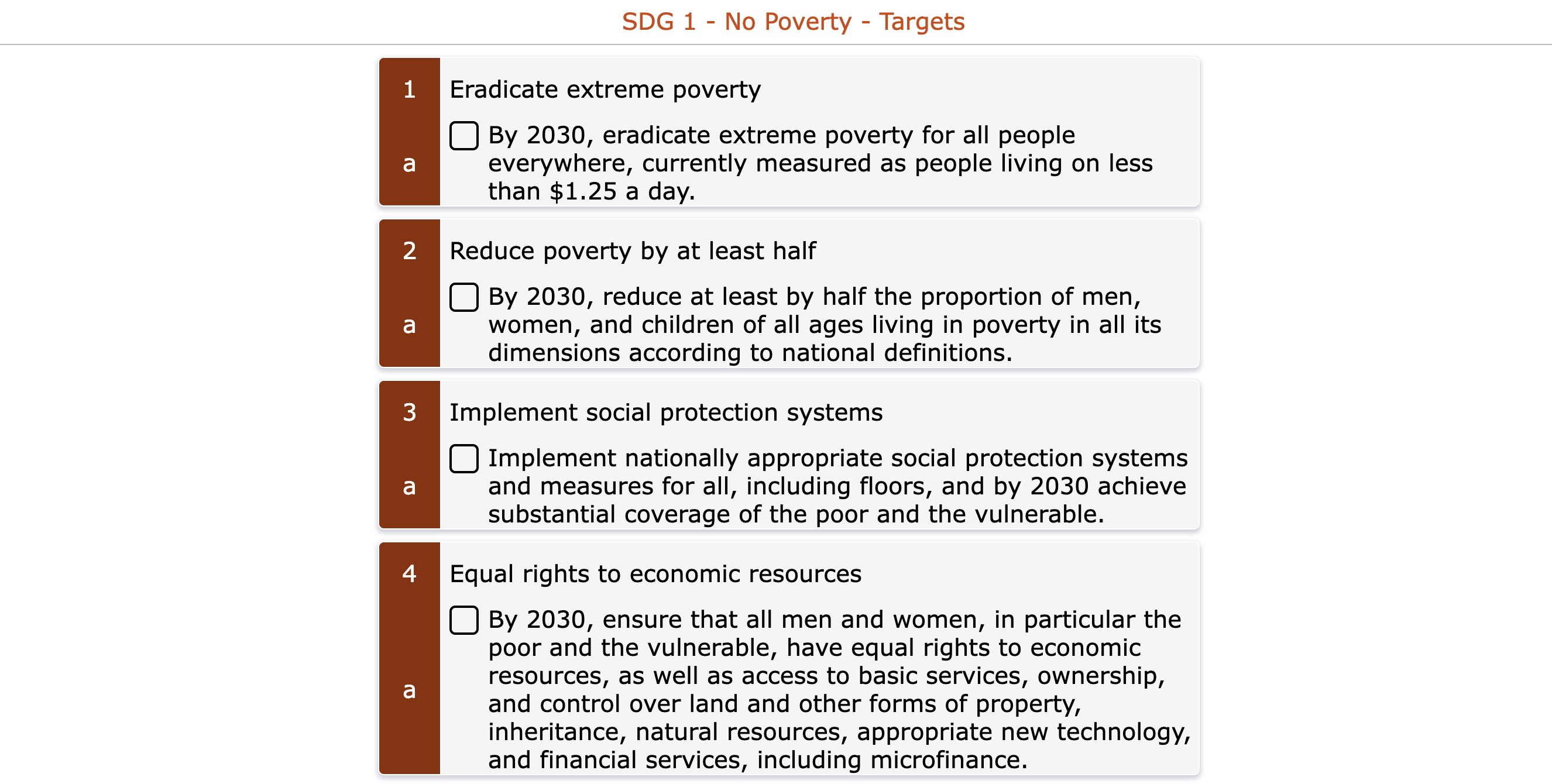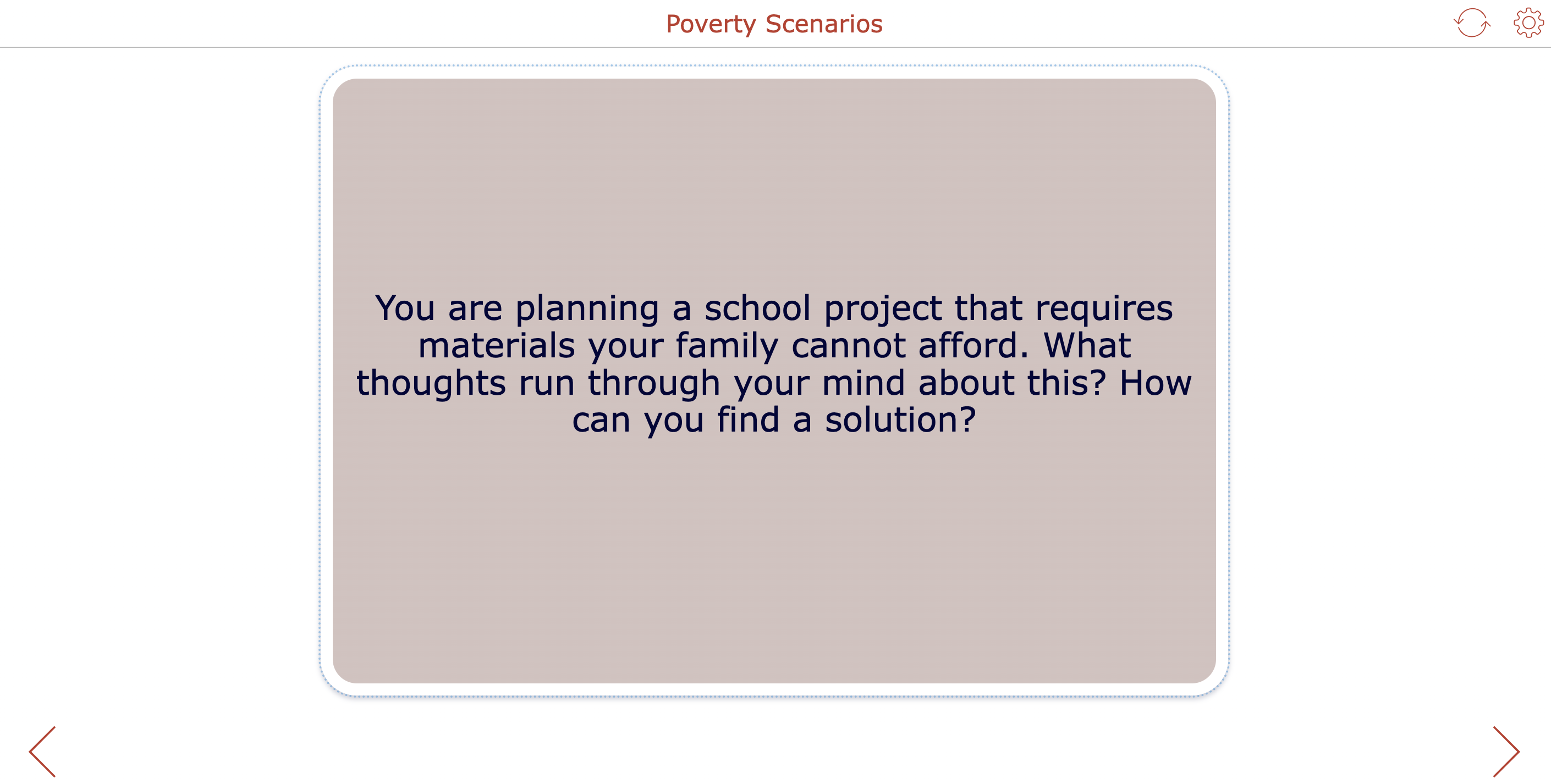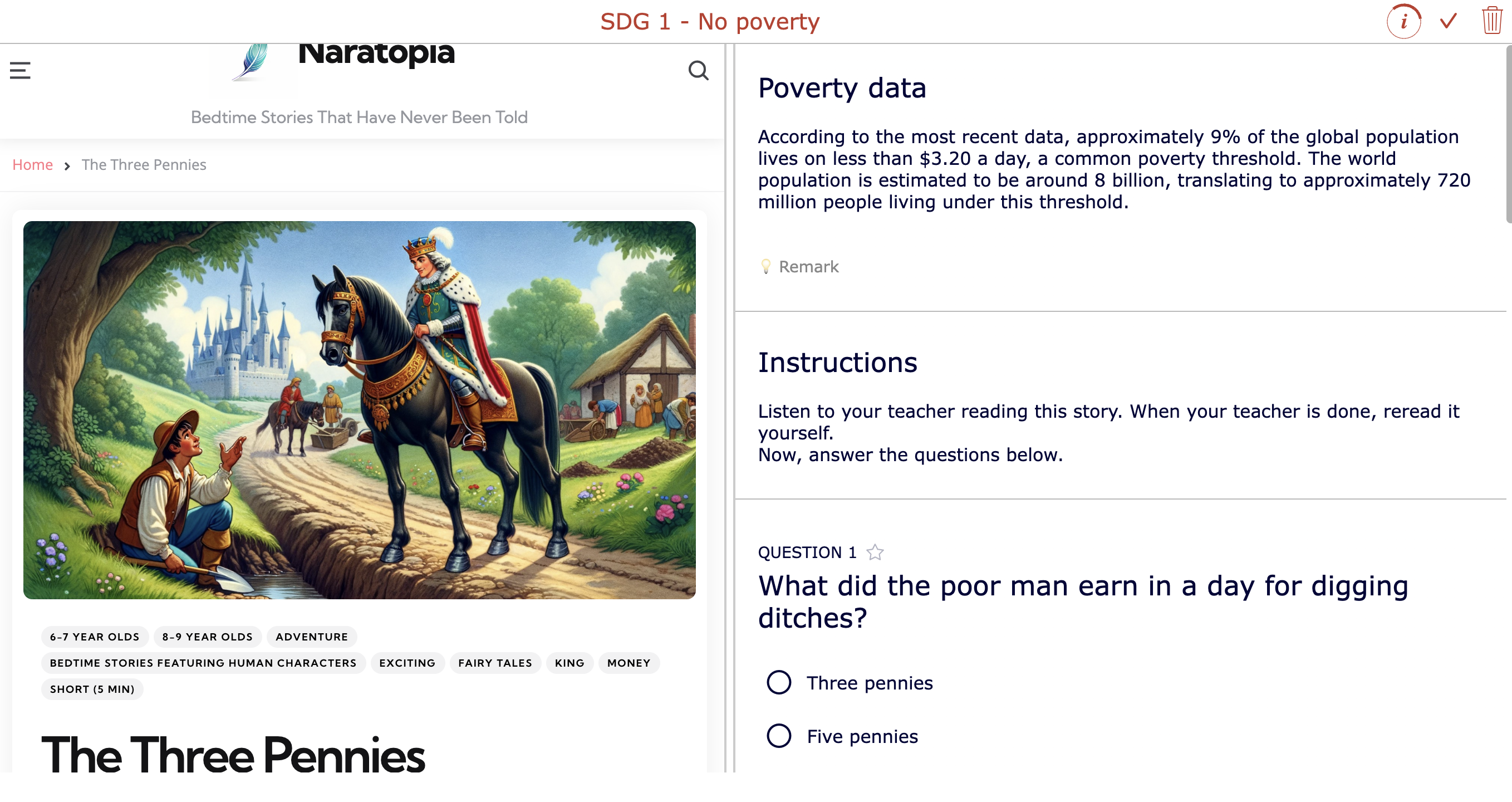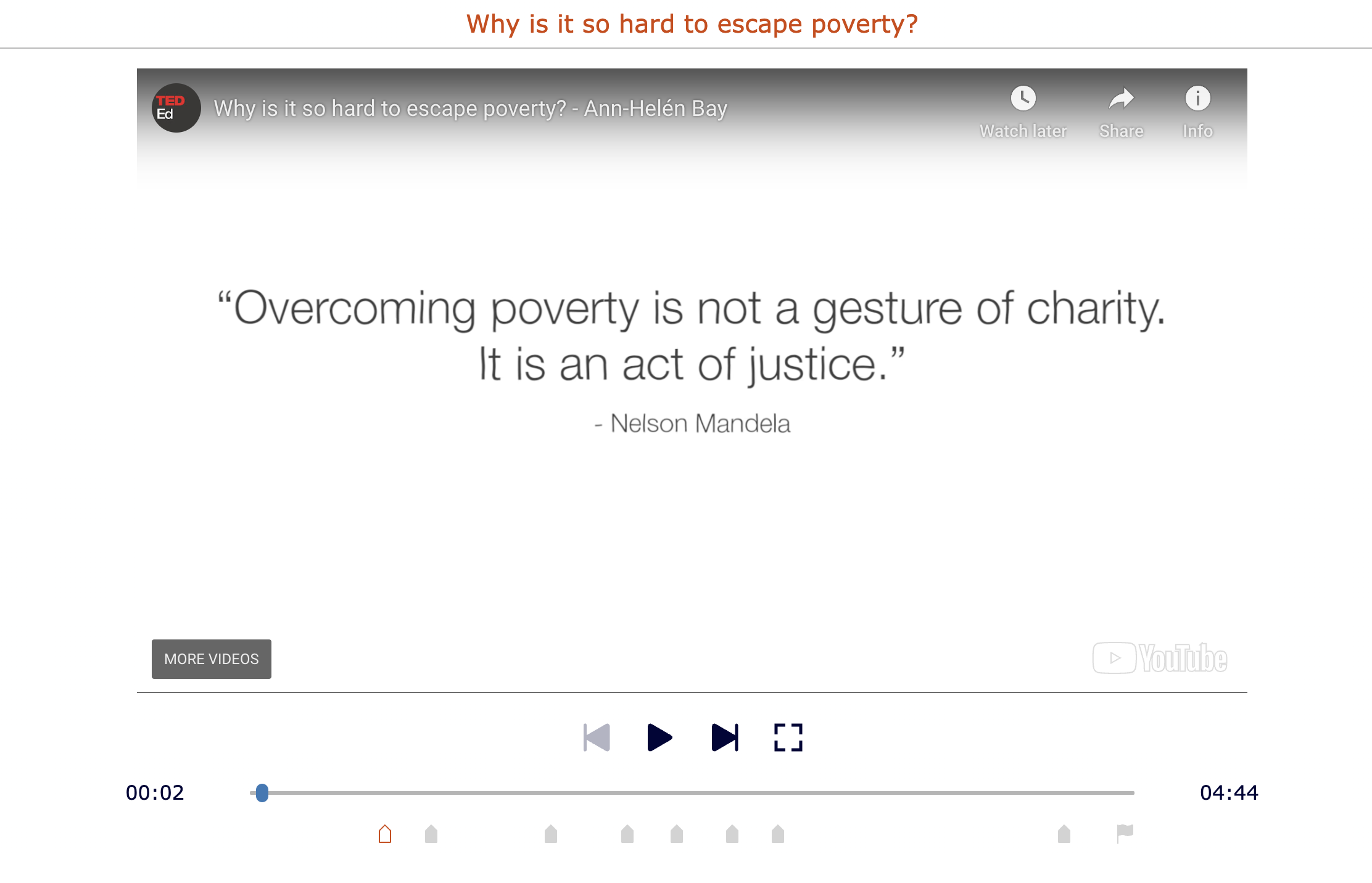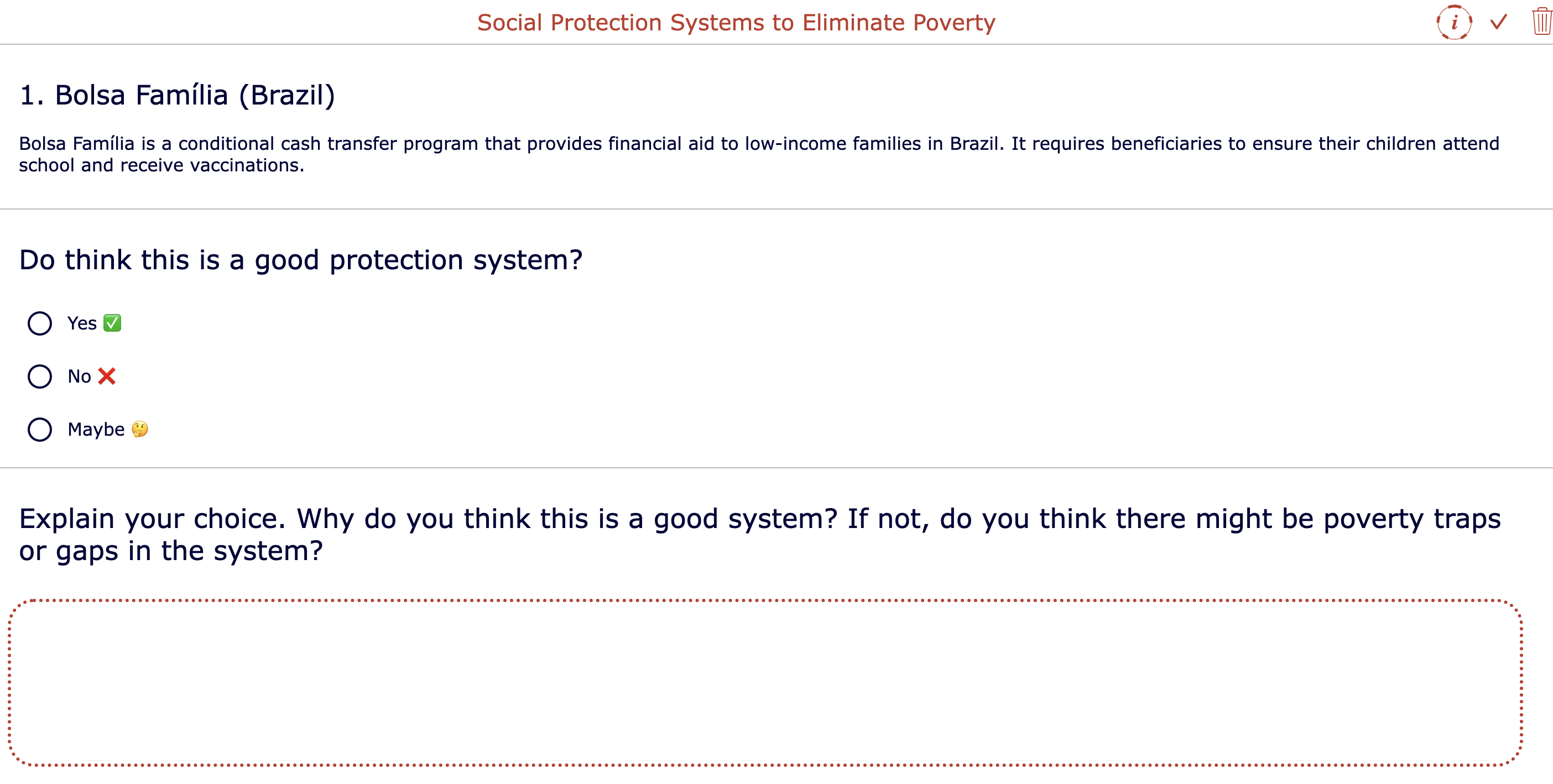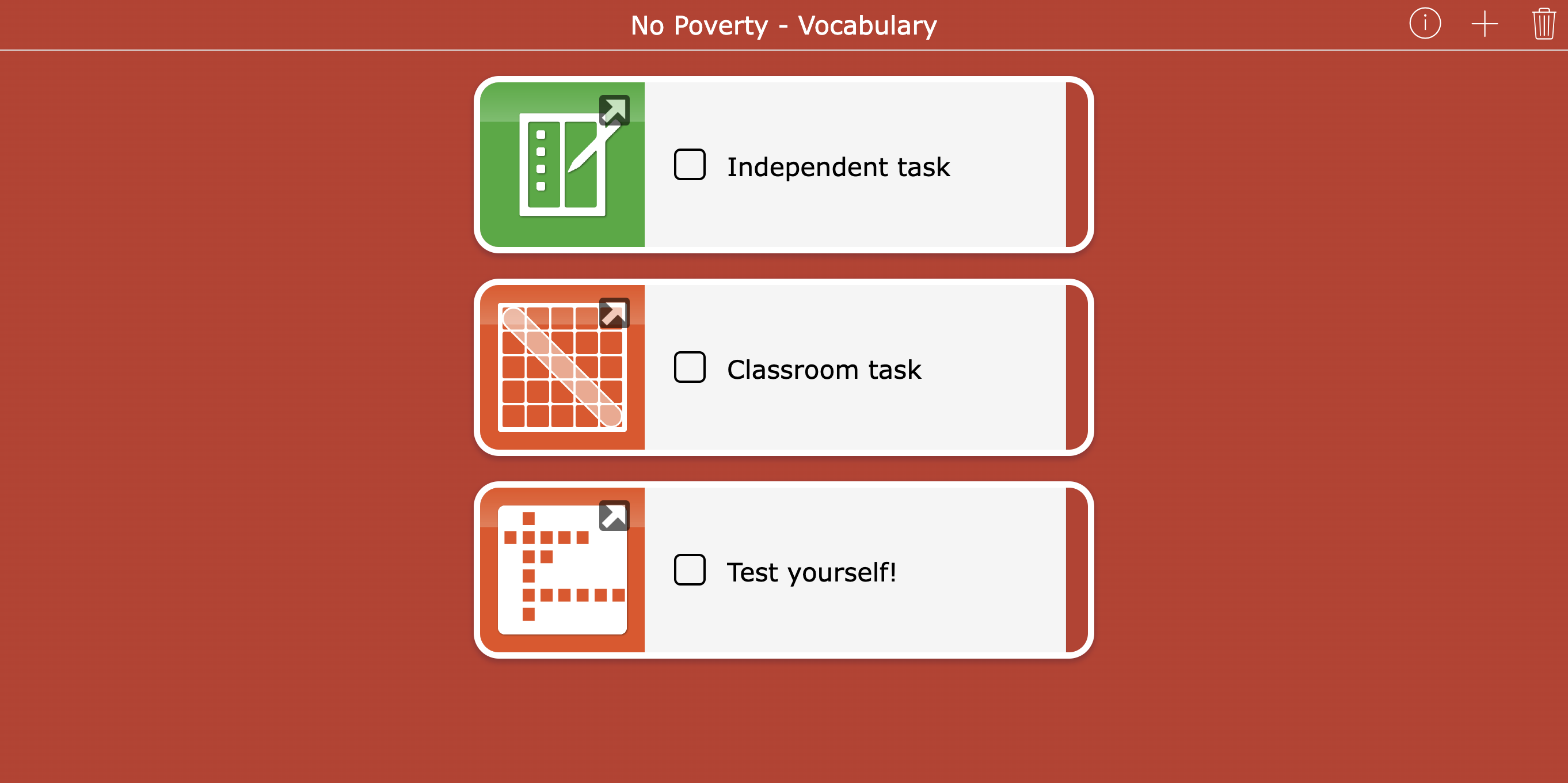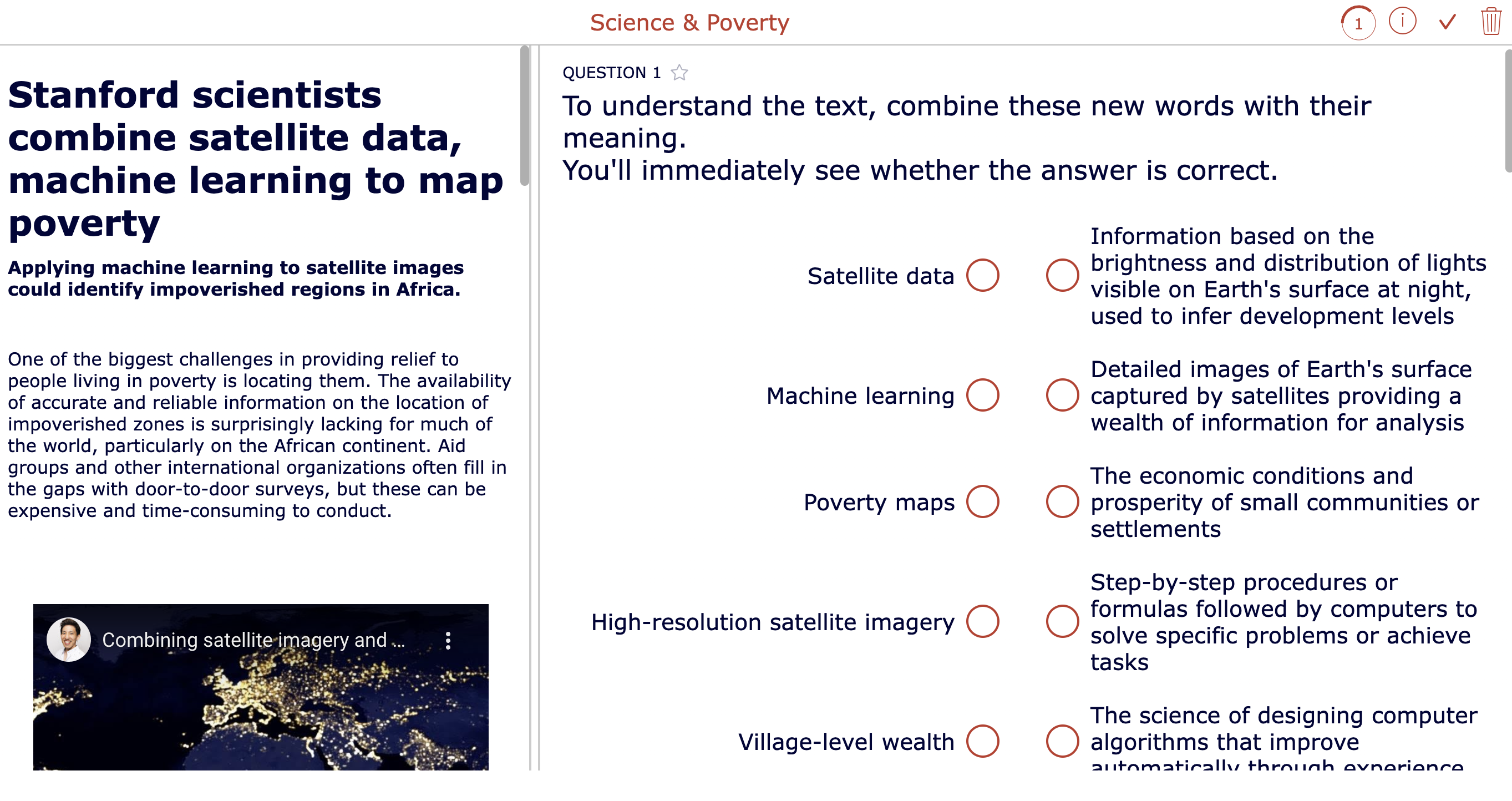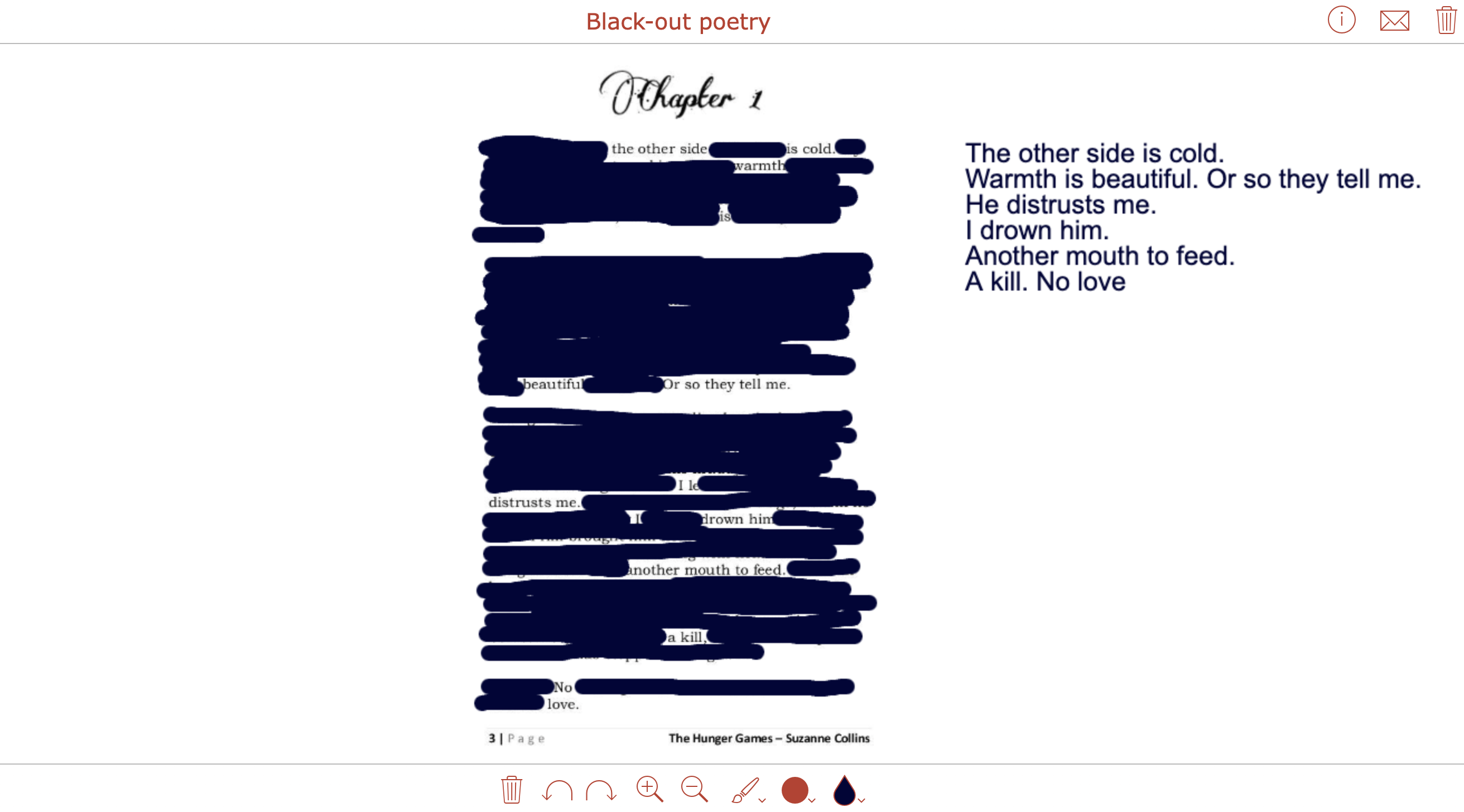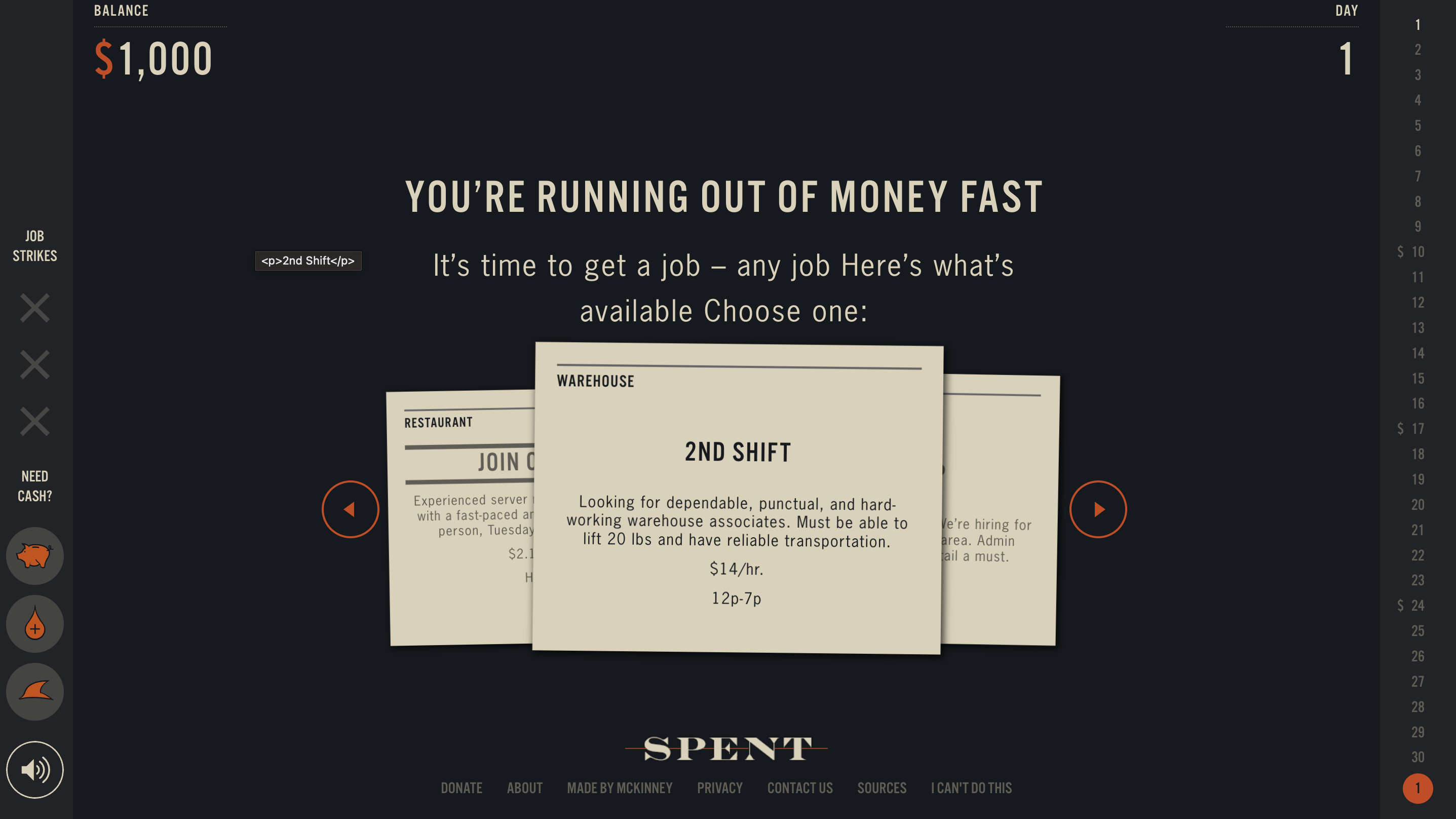8 Engaging Lesson Plans to Teach "SDG 1: No Poverty" to Your Students
 Lucie Renard —
Lucie Renard —
Sustainable Development Goal (SDG) 1 aims to end poverty in all its forms everywhere by 2030. As educators, teaching about SDG 1, “No Poverty,” is crucial to raising awareness and fostering a proactive generation in eradicating poverty. Integrating this goal into your curriculum can help students understand the complexities of poverty, its causes, and solutions. This blog post provides valuable information on SDG 1 and shares 8 engaging lesson ideas, including ready-to-use digital activities, to make this topic resonate with your students.
💡 The digital activities are created with BookWidgets, a content creation and evaluation tool for teachers. You can make a copy of the lessons below to your free BookWidgets account, or you can navigate to this BookWidgets group folder where you can find them all together. This allows you to duplicate the activities, make changes (language, instructions, settings) when needed, and share it with your students. This way, you will also receive the results and be able to provide student feedback.
Now, let’s get started!
What is SDG 1: No Poverty?
Over 700 million people, or 10% of the world’s population, still live in extreme poverty, struggling to meet the most basic needs like health, education, and access to water and sanitation.
SDG 1 seeks to end poverty in all its dimensions by 2030, ensuring that all individuals, regardless of their background, have access to basic needs such as food, shelter, and education. This goal highlights the importance of economic growth, social protection systems, and equal resource access. The goal is divided into more specific goals. I made a checklist for you and your students to understand what it’s all about.
8 Free and Interactive Lesson Plans to Teach “SDG 1 - No Poverty”
Before I show you the first activity, it’s essential to understand why teaching “SDG 1 - No Poverty” to your students is important. Teaching about SDG 1 helps students develop empathy, understand global inequalities, and recognize their role in creating a more equitable world. It aligns with social studies, economics, and geography curricula, providing a real-world context for theoretical knowledge.
⚠️ Important! Although these lessons are intended to create empathy amongst students for every student’s situation, some lessons might be hard to face for students who are really in this situation. Always analyze your classroom and students and make the right call regarding your students and their situations.
1. Poverty Simulation Flashcards
Help students understand the daily challenges faced by individuals living in poverty. Create a card deck with different scenarios and let your students draw one. In these scenarios, students must manage a limited budget for food, housing, and other necessities. Discuss the difficulties they faced and possible solutions.
I created a set of digital cards below. These scenarios work best with grade 5 to 6 students. When you make a duplicate and click the preview button, you can also print the cards.
2. Comprehensive Listening & Reading Activity SDG 1
This BookWidgets Split Worksheet activity is a very good introduction to SDG 1 when you’re teaching 6th-grade students. Using the fantastic bedtime stories website, Naratopia, I linked a poor man’s story to SDG 1. You first read the story out loud, so your students need to listen to the story. Next, your students read it a second time when opening the activity. Now, they can solve the questions on the other side. This story teaches your students an important lesson. Can your students find out what the moral of the story is?
3. Why is it hard to escape poverty? Video Quiz Activity
This Video Quiz activity shows an interesting TedEd video explaining why it’s hard for individuals to escape poverty. The video pauses at some point to ask your students questions about what they just learned and check their understanding. This is the perfect activity to introduce “SDG 1 - No poverty” to high school students.
4. Social Protection Systems Worksheet
This lesson idea is perfect to let students explore different perspectives on poverty and its solutions. Have students debate policies that could alleviate poverty.
To start a discussion, you can let your students agree or disagree with a certain policy rule or social protection system. Here’s just a worksheet showcasing 5 social protection systems around the world. Your students need to think critically and argue the benefits or traps of these systems. It’s the perfect SDG 1 activity for high school students.
5. Vocabulary Lesson
With new lesson material, students will always struggle with new words and complicated terms. In this planner lesson, 3 activities build up the understanding of the new vocabulary and complicated terms in a fun way. This lesson will take an entire lesson, but in the end, your students will understand the new vocabulary.
- First, your students need to spin the wheel, look up the 5 random words they get, and write down the meanings of those words.
- In the next activity, your students get time to find the new SDG 1 vocabulary in a word search activity. After that, the teacher calls out students individually to indicate the word they found in the word search on the big screen. Students who also looked up the meaning of a particular word may explain it to their classmates.
- Lastly, your students can test themselves by reading an explanation/ definition and recalling the new term they learned.
I also added a flashcard deck so students can practice the new words before, during, or after the planner lesson. This SDG 1 vocabulary lesson is for high school students.
6. Science & Poverty
This Split Worksheet activity encourages your high school students to learn more about how science can be used to eradicate poverty. Your students read an interesting article and watch a video so they can solve important questions to demonstrate their understanding of the topic.
7. Blackout Poetry Project
Have students write blackout poems about poverty. I created a whiteboard activity and added text. Students can now black out words to create a poem about poverty. This type of poetry also symbolizes the emotions people living in poverty often feel. On the other hand, SDG 1 is all about eradicating and wiping out poverty. Here, the “blackout poetry” assignment also correlates with the symbolics of the SDG.
Your students all start with the same text. You’ll be amazed by the different poems that will come out. Ask your students to write the end result, next to the blackout poem. Just like in my example below. I gave it a try. 💡Students can send their poems to you when you create a free BookWidgets account. You’ll be able to find all the results there and provide feedback.
8. Poverty Simulation Spent
“SPENT” is a free, interactive online simulation game where your students experience the challenges of living on a limited budget. Players make daily decisions about housing, food, healthcare, and employment while managing unexpected expenses. The game emphasizes the precarious nature of poverty and the difficult choices that low-income individuals face. By simulating a month in the life of a person struggling financially, “SPENT” provides a visceral understanding of poverty.
This game aligns with teaching SDG 1 by illustrating the real-life impact of poverty on individuals and families. It helps students understand poverty’s complexity and multidimensional aspects, highlighting the importance of economic stability, access to resources, and social support systems. The game fosters empathy and critical thinking, encouraging students to think about solutions to poverty and the role of social protection systems in achieving SDG 1: No Poverty.
More ready-to-use SDG lesson plans and resources
This is just part one of a blog post series about teaching the SDG’s. I will post a new blog post about the next SDG in line every month. And if you can’t wait this long, I already created 1 lesson for each SDG in this digital group work planner activity. Here’s the blog post about teaching the SDGs and you can find all the seperate SDG activities in this BookWidgets group folder in case you want to make some changes.
Wrap up
Teaching about SDG 1: No Poverty is essential in fostering a compassionate and informed generation. By integrating these ready-to-use interactive and digital activities into your lessons, you can help students understand the complexities of poverty and inspire them to take action. Let’s equip our students with the knowledge and empathy they need to create a world free of poverty.
Remember, All the featured SDG lesson plans are designed with BookWidgets. You can duplicate the SDG lesson plans from this group, adapt them, and share them with your students. You can also create lessons on this topic or any other topic from scratch. Want to learn more about creating engaging lesson activities with BookWidgets?
✔️ Follow BookWidgets on X / Twitter, LinkedIn, Instagram, and join our teacher community on Facebook! ✔️ And, be sure to connect with me, Lucie, on LinkedIn! 👋
